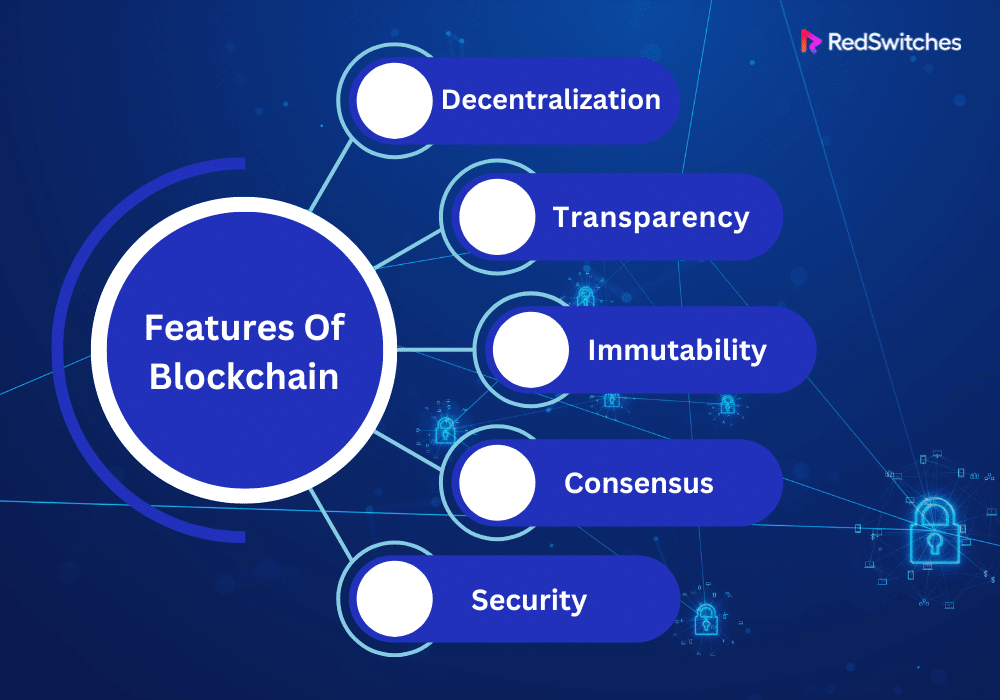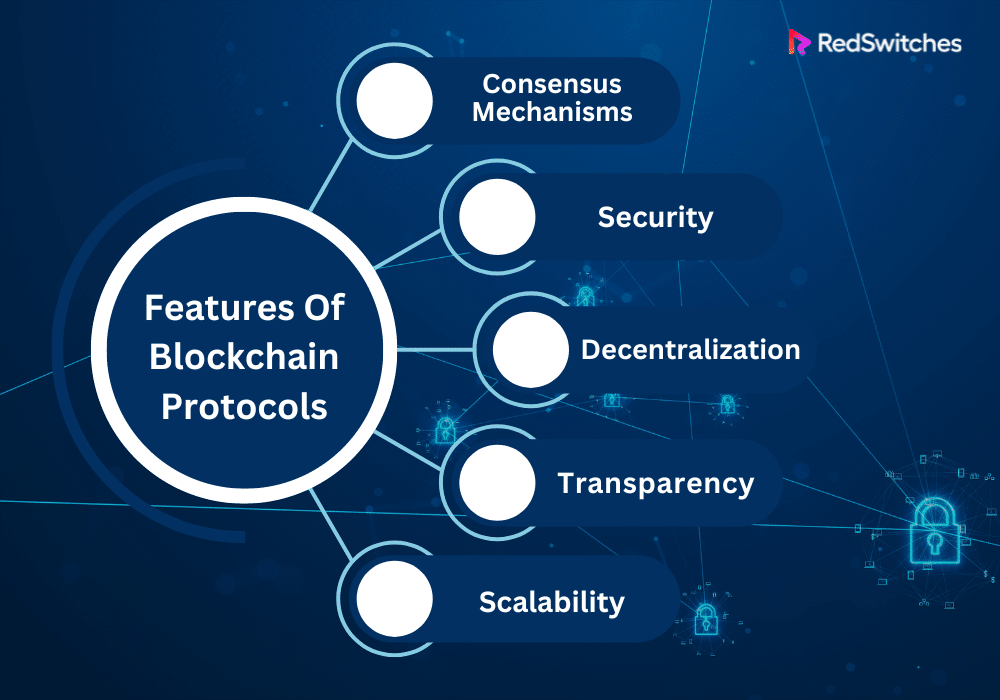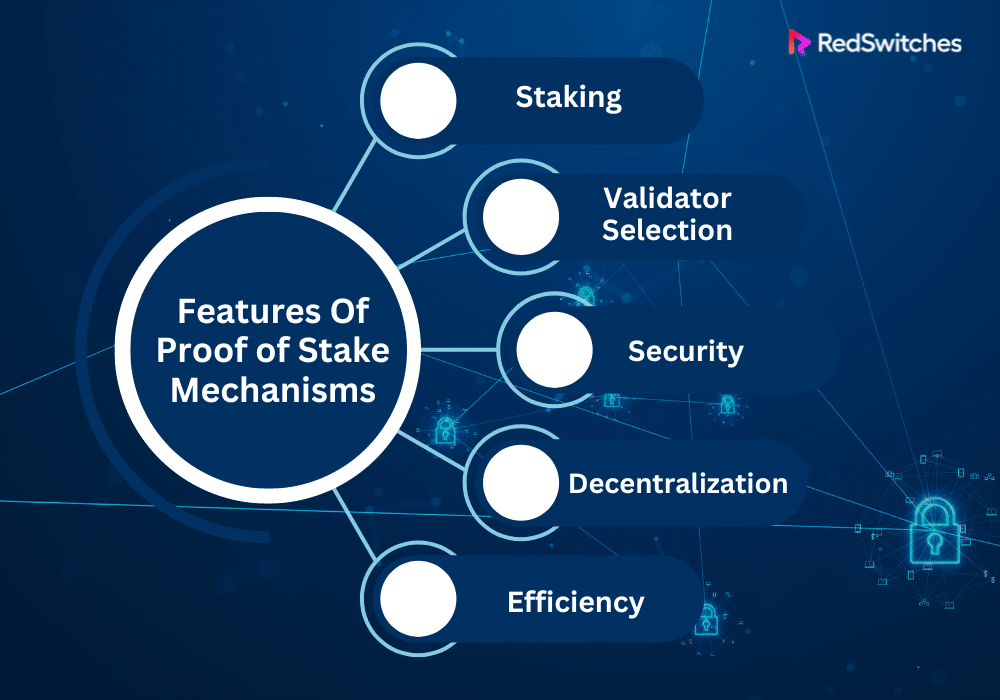Key Takeaways
- Blockchain is a secure way to record transactions. Proof of Stake (PoS) uses less energy than Proof of Work (PoW).
- PoS is faster, more secure, and eco-friendly. It changes how cryptocurrencies work.
- Blockchain basics include that it doesn’t have a central owner, everyone can see transactions, data can’t be changed, agreement is needed for updates, and it uses strong security codes.
- Protocols rules for keeping cryptocurrencies safe. They make sure transactions are correct, and everything is stored properly.
- Ethereum 2.0, Tezos, and others use PoS. This makes them better for more users, safer, and uses less power.
- Crypto Staking in PoS lets anyone help. You earn rewards, and the network gets stronger.
- Blockchain layers make it work better. Layer 1 is the base, Layer 2 makes it faster, and Layer 3 is for applications.
- Blockchain keeps getting better (1.0 to 5.0). Now it’s used for more than just money.
- Blockchains and protocols are different. Protocols are like extra features that make blockchains more useful.
Blockchain technology marks a giant leap in the digital currency world. It acts as the main structure for cryptocurrencies, ensuring a safe and clear way to log transactions. Among its many methods, Proof of Stake (PoS) stands out. It’s a greener and more efficient option than Bitcoin’s Proof of Work (PoW), which uses much energy.
Studies show that PoS protocols can significantly enhance security while introducing minimal block generation and validation overhead.
Looking closer at blockchain protocols and PoS, we see important usage and effectiveness numbers. PoS can make systems safer and reduce time to create and check blocks.
With PoS, users can check transactions if they lock away some of their cryptocurrency as a security deposit. This change does more than just tweak the tech. It’s changing the game for how cryptocurrencies work, making them easier to get into and better for the planet.
As we explore blockchain protocols and PoS, we’ll see how this new method reshapes digital transactions. It makes them quicker, able to handle more at once, and kinder to the environment.
Table of Contents
- Key Takeaways
- What Is Blockchain?
- What Is the Blockchain Protocol?
- What Is Proof of Stake (PoS) Mechanisms
- Blockchain Protocols vs Proof of Stake
- 10 Blockchain Protocols and Proof of Stake (PoS) Mechanisms
- Understanding the Significance of Blockchain Protocols in 2024
- What is the Difference Between Blockchain and Protocol?
- Conclusion
- FAQs
What Is Blockchain?
Credits: Freepik
Blockchain technology is a digital ledger that records transactions across many computers. This system ensures that each entry in the ledger is secure and unchangeable.
Imagine it as a chain of blocks. Each block contains several transactions. Once a block is full, it links to the previous block. This forms a chain of blocks, or a “blockchain.” This method was first linked to the cryptocurrency, Bitcoin, but its uses have grown far beyond.
The beauty of blockchain solutions is in their transparency and security. Every transaction on a blockchain is visible to anyone with access to the system. Yet, it is incredibly secure.
Once a transaction is recorded, changing it is nearly impossible. This is because each block is connected to the one before it and contains a unique code that changes if tampered with. This makes blockchain a powerful tool against fraud and hacking.
Features Of Blockchain
- Decentralization: Unlike traditional ledgers or databases controlled by a single entity (like a bank or government), blockchain platform spreads its operations across a network of computers. This means no single person or organization has control over the entire blockchain. This decentralization adds to the security and trustworthiness of the data.
- Transparency: Every participant in the blockchain network can view the transactions stored in the blocks. This transparency ensures that all actions are open and can be verified by anyone in the network, promoting a level of honesty and trust not always found in traditional systems.
- Immutability: Once a transaction is recorded in a block and added to the chain, it cannot be altered or deleted. This immutability protects the integrity of the entire blockchain and ensures that all transaction records are permanent and unforgeable.
- Consensus: For a transaction to be recorded on the blockchain, it must be verified by the majority of participants in the network. This process, known as consensus, helps prevent fraudulent transactions and ensures that each transaction is accurate and agreed upon by the community.
- Security: Blockchain system uses advanced cryptographic techniques to secure data. Each block contains a cryptographic hash of the previous block, creating a secure link between blocks. This and the network’s decentralized nature make it extremely difficult for hackers to compromise the data.
Blockchain technology is not just the foundation of cryptocurrencies like Bitcoin. It’s paving the way for various application use cases across industries, from finance to healthcare, by offering a secure, transparent, and efficient way to record and verify transactions.
What Is the Blockchain Protocol?
Credits: Freepik
A blockchain protocol is a set of rules that guide the operation of a blockchain network. These rules define how transactions are validated, recorded, and stored on the blockchain.
It’s like the playbook for a team, ensuring every player knows the game plan. This ensures consistency, security, and decentralization across the network. By sticking to these rules, all participants in the network agree on how to add new transactions to the blockchain. This agreement is crucial for the blockchain’s integrity and trustworthiness. Blockchain protocols often rely on networks of dedicated servers to maintain a distributed ledger of transactions, ensuring security and immutability.
Blockchain protocols are the backbone of cryptocurrency systems, enabling secure and transparent transactions without a central authority. They are what make cryptocurrencies like Bitcoin and Ethereum possible. Without these protocols, cryptocurrencies couldn’t ensure the security or reliability they do today.
Features Of Blockchain Protocols
- Consensus Mechanisms: At the heart of blockchain protocols are consensus mechanisms like Proof of Work (PoW) and Proof of Stake (PoS). These mechanisms allow network participants to agree on the validity of transactions. PoW involves solving complex mathematical problems, while PoS selects validators based on the amount of cryptocurrency they hold.
- Security: Blockchain protocols use advanced cryptography to secure data, ensuring that transactions are tamper-proof and safe from hackers. This cryptographic security is vital for maintaining trust in the system.
- Decentralization: Unlike traditional systems controlled by a single entity, blockchain protocols distribute data across a network of computers. This decentralization removes single points of failure and increases the network’s resilience.
- Transparency: While ensuring privacy for users, blockchain protocols offer a level of transparency. Every transaction is visible to all network participants, promoting trust and integrity within the ecosystem.
- Scalability: Different protocols offer various solutions to handle more transactions per second. Scalability remains a focus as the technology evolves, with innovations to make blockchain networks faster and more efficient.
Blockchain protocols are not just technical specifications; they are the foundation of the modern crypto economy. They ensure that every transaction adheres to agreed-upon rules, creating a stable, secure, and scalable system for digital transactions. Blockchain protocols are key to a decentralized future, whether it’s sending cryptocurrency, executing smart contracts, or logging data securely.
What Is Proof of Stake (PoS) Mechanisms
Proof of Stake (PoS) is a key part of blockchain technology. It’s cleaner and more efficient than the old Proof of Work (PoW) method. PoS started with Peercoin in 2012 and has quickly become popular. It picks validators not by solving puzzles but by how much cryptocurrency they can “stake” or lock away as security.
This way, PoS reduces energy use and makes it fairer for people to validate transactions. Validators stake their coins and help keep the network safe and run smoothly, and they get rewards for it. If a validator tries to cheat, they could lose their staked coins. This makes sure validators work for the good of the network. In Proof-of-Stake (PoS) mechanisms, dedicated servers are essential for validators who stake their cryptocurrency to participate in block creation.
Features Of Proof of Stake (PoS) Mechanisms
- Staking: At the heart of PoS is staking crypto, where participants lock up a portion of their cryptocurrency as a security deposit. The more you stake, the higher your chances of being chosen as a validator.
- Validator Selection: Unlike PoW, where the fastest miner wins, PoS selects validators based on their stake and sometimes other criteria, aiming for a fair and decentralized process.
- Security: In PoS, attacking the network is prohibitively expensive. An attacker must own a significant portion of the staked cryptocurrency, making the attack more costly than beneficial.
- Decentralization: PoS encourages a more decentralized network by allowing anyone with a stake to participate in validation, unlike PoW, which can be dominated by those with the most powerful computing resources.
- Efficiency: PoS is vastly more energy-efficient than PoW. It eliminates the need for energy-intensive mining operations, reducing the blockchain’s carbon footprint. The reliability and performance of dedicated servers directly impact the speed and efficiency of PoS blockchains.
Blockchain Protocols vs Proof of Stake
Credits: Freepik
Blockchain protocols are the foundation of blockchain technology. They govern how a blockchain network adds, views, and verifies data. Think of them as the guidelines that ensure data on the blockchain is secure, transparent, and unchangeable. Blockchain protocols are essential because they maintain the integrity and functionality of the blockchain.
Key Differences
- Role in Blockchain: Blockchain protocols define the entire framework of a blockchain, including how data is handled and secured. Proof of Stake is a method used within these protocols for achieving consensus on the network’s state.
- Purpose: Blockchain protocols create a secure and decentralized digital ledger. PoS, on the other hand, aims to validate transactions and secure the network energy-efficiently.
- Energy Efficiency: Most blockchain protocols are neutral in terms of energy consumption. However, PoS was specifically designed to reduce the energy consumption associated with validating transactions, addressing one of the major criticisms of traditional PoW systems.
PoS Vs PoW
- Validation Process: In PoW, miners compete to solve puzzles and validate transactions. In PoS, validators are chosen based on their stake in the network, making it less energy-intensive.
- Reward System: PoW rewards miners with new coins for every block mined. In PoS, validators earn transaction fees instead, as creating new coins often isn’t part of the process.
- Energy Efficiency: PoW requires massive amounts of electrical power, contributing to environmental concerns. PoS, on the other hand, significantly reduces energy consumption by eliminating complex computations. Due to the resource-intensive nature of PoS validation, dedicated servers provide the necessary computational power and network bandwidth.
- Security: Both systems offer strong security, but their approaches differ. PoW requires attackers to gain 51% of computational power, which is challenging. In PoS, attackers need to own 51% of the staked currency, which is difficult and devalues their investment. Dedicated servers for PoS validators offer increased security compared to shared hosting environments, minimizing the risk of attacks.
- Decentralization: PoW can lead to the centralization of mining power among a few large players. PoS promotes greater decentralization by allowing more participants to validate transactions based on their stake.
Proof of Stake (PoS) is a big step forward in blockchain technology. It uses less energy and is safer and more spread out than the old Proof of Work (PoW) method. PoS solves many problems with earlier blockchains, like being hard to scale up and not being good for the environment. Now, big names in cryptocurrency, like Ethereum, are switching to PoS. This shows that PoS might be a big part of blockchain’s future. It offers a better way to handle digital transactions for the planet, includes more people, and works more smoothly. Staking rewards generated by dedicated servers in PoS systems offer potential passive income streams for node operators.
10 Blockchain Protocols and Proof of Stake (Pos) Mechanisms
Credits: Freepik
Forget energy-guzzling mining rigs! The blockchain world is evolving, and Proof of Stake (PoS) is leading the charge. Think of it as cryptocurrency’s eco-friendly, super-efficient cousin. Instead of machines racing to solve puzzles, PoS lets you secure the network by holding a stake (like an investment) in the currency. Intrigued? Let’s dive into ten popular blockchain protocols rocking the PoS revolution:
Ethereum
Ethereum, a leading platform for decentralized applications (dApps), made a significant shift from Proof of Work (PoW) to Proof of Stake (PoS). This transition, known as Ethereum 2.0, marks a pivotal move towards sustainability, scalability, and security. In the PoS system, validators stake Ethereum as collateral to validate transactions and create new blocks. This method contrasts sharply with PoW, where miners use substantial computational power to solve complex puzzles.
The switch to PoS addresses several critical concerns. First, it drastically reduces energy consumption. The energy-intensive mining of PoW is replaced by staking, making Ethereum’s network more eco-friendly. Secondly, scalability improves. PoS allows faster transaction processing, enhancing the network’s capacity to handle more transactions. Lastly, security gets a boost. In PoS, for bad actors to attack the network, they must control over 51% of the staked coins. This requirement makes such attacks highly expensive and unlikely, securing the network further.
Ethereum’s move to PoS isn’t just a technical upgrade; it’s a step towards a more sustainable and efficient blockchain ecosystem. By leveraging staking, Ethereum aims to become more scalable, secure, and environmentally responsible, paving the way for broader adoption of blockchain technology.
Tezos
Tezos stands out in blockchain with its unique consensus mechanism, Liquid Proof of Stake (LPoS). This system distinguishes itself from others by integrating seamlessly with Tezos’ on-chain governance. In LPoS, validators, known as “bakers,” stake their cryptocurrency as collateral. However, unlike traditional PoS systems, LPoS allows for a more dynamic participation form. Stakeholders can delegate their stakes to bakers without transferring ownership, offering flexibility and a decentralized approach to validation.
Similar to other PoS systems, the LPoS system is designed to maintain decentralization while minimizing energy consumption. Yet, it goes a step further by enhancing the network’s governance. Stakeholders can vote on protocol upgrades, allowing for a democratic and efficient evolution of the Tezos blockchain. This feature promotes an adaptable and resilient network capable of evolving with its community’s needs.
Furthermore, the ability for delegators to switch bakers promotes competition and efficiency among validators, ensuring the network remains secure and robust. Tezos’ LPoS mechanism is energy-efficient and fosters a more engaged and responsive community, contributing to the platform’s stability and growth.
Dogetti
Dogetti uses Proof of Stake (PoS), a method that’s better for the environment than the old Proof of Work (PoW). PoS doesn’t need a lot of power or computers, making it eco-friendly. This approach matches worldwide goals to be more sustainable by making the process of checking transactions and making new blocks use less energy.
Dogetti mixes a mafia theme with cute dogs, making it popular in the crypto world. This mix shows the project’s aim to be fun and engaging. As an ERC-20 token on the Ethereum network, Dogetti is safe and can handle a lot of transactions, making it a solid and creative tool for its users.
Dogetti is about more than just fun. It wants to improve the DeFi area by making transactions faster, cheaper, and safer than old ways of paying. The DETI token helps with different activities in Dogetti, showing its plan for a better digital economy. Being on big exchanges like Binance helps Dogetti become more known and offers a new take on meme coins that focus on the community.
EOS
EOS stands out with its Delegated Proof of Stake (DPoS) system, an improved type of the usual PoS method. DPoS focuses on being fast, efficient, and allowing users to take part in decision-making. In this setup, people holding tokens vote for delegates to handle transactions and make new blocks. These delegates are picked for their investment, good name, and trustworthiness, and they keep the blockchain working smoothly.
The DPoS method lets token holders play a direct role in how the network is run. This way of involving users not only makes the system safer by spreading out the task of validating among chosen delegates but also keeps the network easy to change and grow according to user needs. By using less energy than PoW methods, EOS is also making blockchain more eco-friendly.
Moreover, DPoS makes EOS transactions quick and efficient. The way delegates are chosen democratically makes EOS a leader in creating a blockchain that is easy to use, safe, and can grow. EOS shows how blockchain can improve, focusing on being efficient, inclusive, and kind to the environment.
Cardano
Cardano uses a Proof of Stake (PoS) system, making it a green and efficient blockchain. Unlike the Proof of Work (PoW) method, which uses a lot of energy, Cardano’s PoS picks validators based on how much currency they can lock in as a security. This uses less energy and helps reduce the carbon footprint.
At its heart, Cardano aims to be fair and eco-friendly. It moves away from the PoW’s big energy use, keeping its network safe and spread out without the huge cost. The more currency someone stakes, the more likely they are to be chosen as a validator. This encourages people to join and support the network while keeping things fair and open.
Cardano’s method leads to a cleaner blockchain and makes it faster and easier to handle transactions since there’s no need for mining contests. This attracts developers and users who want sustainable and effective crypto options. Cardano is all about mixing innovation with caring for the environment by valuing staked currency over computing power.
Also Read 7 Types of Staking Explained: Your Go-To Crypto Staking Guide for 2024
Solana
Solana introduces an innovative way of validating transactions by mixing Proof of History (PoH) with Proof of Stake (PoS). This new method tackles big blockchain problems: handling a lot of transactions quickly and growing without losing speed. PoH records the sequence of transactions, making it easy to check when and in what order transactions happened without needing agreement from other parts of the network. This makes checking transactions quicker and more straightforward.
By adding PoS, Solana’s network becomes both secure and efficient. Validators in the PoS system keep the network safe. Meanwhile, PoH speeds up transactions by using a built-in clock, cutting down the time needed for validators to agree on the timing of transactions. Thanks to this, Solana can handle thousands of transactions in a second.
This mix of PoH and PoS shows how combining different methods can make blockchain work better, offering a powerful option for those looking for a fast and scalable platform. Solana’s approach is groundbreaking, marking it as a leader in making blockchain technology faster, more capable of growing, and using less energy.
Tron
Tron utilizes the Delegated Proof of Stake (DPoS) consensus mechanism, setting it apart as a more efficient and scalable alternative to the traditional Proof of Work (PoW) used by Bitcoin. DPoS optimizes for quicker transaction processing and reduced energy consumption, making it an appealing choice for a blockchain seeking to balance performance with environmental responsibility. In Tron’s DPoS system, token holders can vote for delegates responsible for validating transactions and creating new blocks. The probability of being chosen as a delegate increases with the stake one holds, incentivizing investment in the network and participation in its governance.
This democratic network security and governance approach enables Tron to achieve high transaction throughput and scalability. By delegating the task of block production to a select group of validators, Tron ensures that its network can handle large volumes of transactions efficiently without the significant energy costs associated with PoW systems. This makes Tron particularly suited for applications that require fast and cost-effective transaction processing, highlighting the advantages of DPoS in supporting large-scale and high-performance blockchain networks.
Polkadot
Polkadot introduces a nuanced take on consensus mechanisms with its Nominated Proof of Stake (NPoS). NPoS is a variant of the traditional Proof of Stake (PoS), designed to secure the network through a collaborative process involving validators and nominators. Validators are responsible for validating transactions and producing new blocks, while nominators support the network by selecting trustworthy validators. This division of roles allows for a more distributed and participatory approach to network security.
NPoS in Polkadot focuses on ensuring the network remains secure and operational by encouraging a broad base of stakeholder involvement. Nominators back validators they trust with their stake, contributing to the overall security and resilience of the network. This mechanism fosters a community-oriented model of governance, where the roles and responsibilities of maintaining network integrity are shared among its participants. Polkadot’s adoption of NPoS reflects its commitment to an inclusive and decentralized network structure, emphasizing the importance of stakeholder participation in the ecosystem’s health and governance.
Cosmos
Cosmos uses Proof of Stake (PoS) but adds something special: Tendermint Core BFT Consensus. This combo helps fix big issues like slow performance and high energy use, problems common with the old Proof of Work (PoW) method. Tendermint Core is a smart system that copies services over different machines, making the network run smoother and handle more.
In Cosmos, people can lock in (or “stake”) their ATOM coins. This helps keep the network safe, and they get rewards for it. Thanks to Tendermint Core, developers can create their blockchains on Cosmos easily, without getting bogged down by complex tech details.
Cosmos and Tendermint Core are making big strides towards a fast, safe, and open blockchain without hurting the planet.
Algorand
Algorand stands out with its Pure Proof of Stake (PPoS) mechanism, making it unique in the blockchain world. Unlike usual PoS systems, Algorand’s PPoS links a user’s influence on picking new blocks directly to their stake. This system picks users randomly and secretly to suggest and vote on new blocks, boosting network security through the honesty of most users.
Algorand tackles three big blockchain issues: security, ability to handle lots of transactions, and keeping things decentralized. It secures the network and user accounts well, deals with thousands of transactions quickly, and lets every node have a say, making it very decentralized.
PPoS in Algorand is a big step forward, not just an update. It ensures the system can grow, stays secure, and keeps everyone equal in a way that’s good for the planet. Built on Byzantine consensus, Algorand is more open and fair than systems using PoW or regular PoS, putting it at the forefront of blockchain innovation.
Here’s a summary table of each of the discussed blockchain protocols and their key features:
Understanding the Significance of Blockchain Protocols in 2024
Blockchain protocols are the foundation of blockchain technology. They set the rules for how data is managed across a network. This includes how data is stored, shared, and confirmed as accurate. These protocols ensure that data is safe, consistent, and trustworthy. As of 2024, these protocols have become essential in many fields. These include finance, healthcare, and even government.
The Impact on Industries
Credits: Freepik
The Global Protocol Report of January 2024 highlights the growth of blockchain. It shows that innovation needs money, infrastructure, and skilled people. This report also talks about how blockchain has grown over time. Each stage, from Blockchain 1.0 to Blockchain 5.0, has made blockchain useful for different industries.
Trends for Developers
For developers, 2024 is a year of making blockchain easier to use and more accessible. There’s a focus on new DeFi (Decentralized Finance) solutions and making different blockchains work together better. Ethereum 2.0 is a big deal because it’s expected to make things faster, safer, and use less energy.
The Global Market
Credits: Freepik
By 2032, the blockchain market could be worth over $2300 billion. Switzerland is leading the way, hosting 20 of the top blockchain protocols. This shows how important blockchain has become worldwide.
Blockchain protocols are crucial in 2024. They are driving change and improvement across many industries. The Global Protocol Report and other resources show how blockchain is evolving. This evolution is making blockchain more important and useful in our daily lives and for the future.
Also Read A Beginner’s Guide to Setting Up a Staking Node on a Dedicated Server
What is the Difference Between Blockchain and Protocol?
Blockchain is a technology that stores data across a network of computers. This makes the data secure and hard to change. A protocol is a set of rules that decide how data is sent and received in a network. Think of blockchain as a notebook where you write down transactions. The protocol is the rules you follow to write in the notebook.
Thin Protocols
Thin protocols are the basic rules for sending data over the internet. They don’t hold much value for themselves. Instead, the applications built on them, like websites and apps, create value. Consider the internet’s basic rules for sending emails or viewing web pages. These rules are thin protocols.
Fat Protocols
Fat protocols are different. In blockchain, the protocol itself holds a lot of value. The data and its use are all part of the protocol. With blockchain, the value is in the rules and the network, not just the apps built on top. So, in blockchain, the protocol (the rules) is where a lot of the value is stored, making it a “fat” protocol.
Also Read A Guide to the Best GPUs for Mining Bitcoin, Ethereum, and More
Conclusion
Blockchain technology and Proof of Stake (PoS) are changing how we make digital transactions. They offer a faster, more secure, and eco-friendly way to work. Blockchain is like a super-secure record book shared across a network. PoS replaces energy-hungry methods by letting users confirm transactions based on how much cryptocurrency they own. Choosing the right dedicated server configuration with sufficient storage, RAM, and CPU cores is crucial for optimal PoS performance.
This move towards greener technology shows blockchain’s usefulness in many areas, like finance and healthcare. Blockchain protocols are the rules that make blockchains work. They ensure data is safe and everyone on the network agrees. Lately, value has shifted towards the blockchain network itself, making these protocols even more important.
If you want to learn about blockchain’s potential or build your solutions, RedSwitches dedicated server offer a strong foundation. They are secure, can be scaled to grow, and perform really well, making it easy for developers and businesses to use the power of blockchain.
FAQs
Q. What are the three main blockchain protocols?
While there are many, the most widely-known blockchain protocols are:
- Bitcoin: The original blockchain, focusing on secure and decentralized cryptocurrency transactions.
- Ethereum: Supports smart contracts, enabling complex applications beyond simple currency (like NFTs and DeFi).
- Hyperledger Fabric: A permissioned blockchain framework for flexibility and adaptability within enterprise settings.
Q. What is the most common blockchain protocol?
Bitcoin is the most common and widely recognized blockchain protocol. It pioneered the concept of decentralized, trustless transactions.
- What are the 4 types of blockchain networks?
- Public Blockchains: Open to anyone for participation (e.g., Bitcoin, Ethereum).
- Private Blockchains: Permissioned networks with controlled access, often used within organizations (e.g., Hyperledger Fabric).
- Hybrid Blockchains: Blend public and private elements for selective transparency and control (e.g., Dragonchain).
- Consortium Blockchains are networks run by a group of organizations offering shared governance (e.g., R3 Corda).
Q. What are the layer 2 protocols of blockchain?
Layer 2 protocols are built on top of existing blockchains (often called Layer 1) to enhance scalability and transaction speeds. Examples include:
- State Channels: Handles transactions off-chain for speed, recording the final state on the main blockchain.
- Rollups: Bundles transactions off-chain, compresses the data, and then submits it as a single transaction to the Layer.
- Nested Blockchains: Uses a hierarchy of blockchains, where a ‘child’ chain handles most transactions, and the ‘parent’ validates for security.
Q. What is layer 1 vs layer 2 vs layer 3 blockchain?
- Layer 1 is the base blockchain (e.g., Ethereum, Bitcoin). It provides fundamental security and decentralization.
- Layer 2 is built on top of Layer 1 to improve transaction speeds, throughput, and scalability (e.g., Lightning Network on Bitcoin).
- Layer 3 is an additional layer often focused on interoperability, allowing blockchains to communicate and transfer assets (e.g., Polkadot).
Q. What are the key components of a blockchain, and why is the consensus algorithm crucial?
Blockchain is a decentralized network that relies on several key components, including a consensus algorithm, peer-to-peer architecture, and cryptographic security. The consensus algorithm, such as proof-of-stake or proof-of-work, is crucial because it ensures all transactions are verified and agreed upon within the network, maintaining the integrity and security of the blockchain.
Q. How do different blockchain protocols impact the development and adoption of blockchain technology?
Different blockchain protocols, like Ethereum, Bitcoin, and Hyperledger, offer varied features tailored to specific use cases, from financial transactions to smart contracts. Protocol diversity plays a significant role in fostering innovation and determining blockchain projects’ scalability, security, and efficiency, influencing the rate of blockchain adoption across various industries.
Q. Why are open-source blockchain protocols significant in the blockchain ecosystem?
Open-source blockchain protocols are significant because they provide transparency, allowing developers to review, modify, and improve the code. This openness encourages collaboration and innovation within the blockchain community, leading to the development of secure, scalable, and custom blockchain solutions that meet the evolving needs of the industry.
Q. What role do blockchain development companies play in adopting blockchain technology?
Blockchain development companies are pivotal in translating the potential of blockchain technology into practical applications. By offering blockchain development services, these companies help businesses harness the power of blockchain, developing custom solutions that improve transparency, efficiency, and security. Their expertise in navigating the complex world of blockchain protocols ensures blockchain’s successful implementation and integration into existing systems.
Q. Looking ahead, what are the top blockchain ecosystem protocols of 2024,
As of 2024, top blockchain ecosystem protocols include Ethereum, known for its smart contract capabilities, and newer, scalable blockchain protocols designed to address the limitations of earlier systems, such as high energy consumption and low transaction speeds.
Q. What trends are shaping the future?
Trends shaping the future include moving towards more energy-efficient consensus mechanisms like proof-of-stake, integrating blockchain in diverse sectors beyond finance, and continuously improving blockchain protocols to ensure greater scalability, security, and interoperability within the crypto ecosystem.











